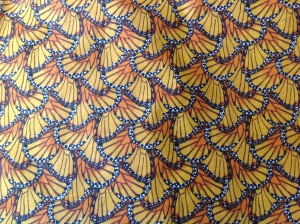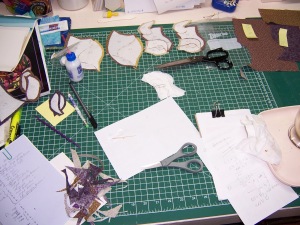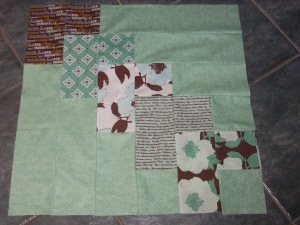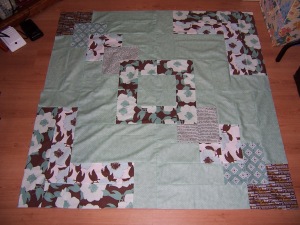Friday marked the beginning of a 6 week Mixed Media class at Toronto School of Art with Jacqueline Treloar. Having failed Grade 9 Art, I feel there is nowhere to go but up.
I decided to work on what I consider one of the ugliest fabrics in my entire collection:
After a demo on acrylic paints & inks, squeegees and rollers, I set out to change this monetary monstrosity. First I used a pinkish acrylic ink with a roller over part of it but this was barely noticeable. I added some red and blue horizontal splotches with a squeegee. Then, at Jacqueline’s suggestion, I lay down painter’s tape in vertical stripes across the piece and painted rough red lines off the tape. I highlighted the straight side of the red stripe with very thin lines of white acrylic and defined them even further with a blue pencil. Class was over.
At home, I sandwiched it, picked out a variegated thread to match and did some straight line quilting to accent the vertical stripes even more.
Hanging in my kitchen now! $$$$$$$$



















